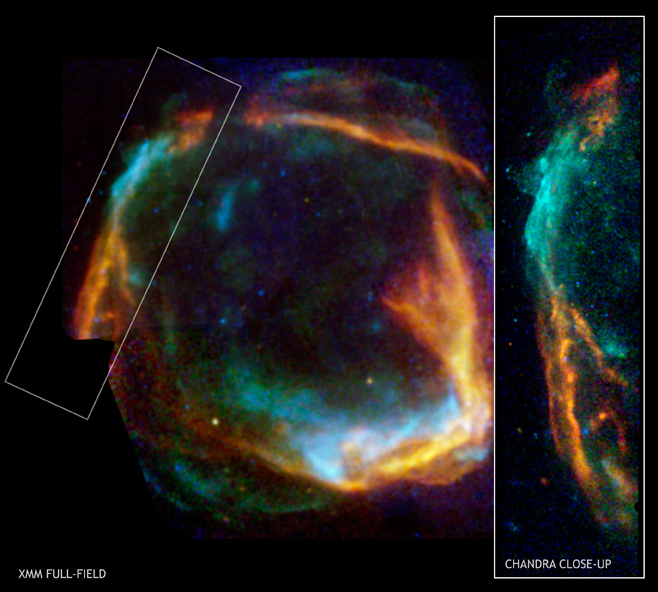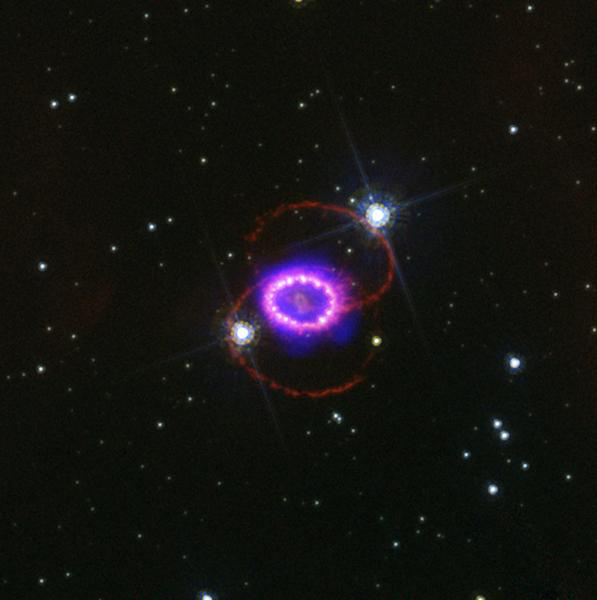CXC Home | Search | Help | Image Use Policy | Latest Images | Privacy | Accessibility | Glossary | Q&A
Introduction and Background:
RCW 86 is a supernova remnant that was created by the destruction of a star approximately two thousand (2000) years ago. This age matches observations recorded by the Chinese and the Romans in 185 A.D. RCW 86 is 8200 light years away in the direction of the constellation Circinus and is considered to be the earliest recorded observation of a supernova event. Supernova events are relatively rare in the Milky Way Galaxy (MWG), occurring about twice every one hundred (100) years. The last known supernova event in the MWG occurred ~146 years ago. Because supernovas are rare within any galaxy, obtaining a good sample of supernovas to study requires regular monitoring of many galaxies. In the Large Magellanic Cloud galaxy, one hundred and sixty thousand (160,000) light years away, a supernova explosion took place in 1987. Astronomers and spacecraft have been monitoring this event
(SN 1987A) continuously as it changes over time. The movie clip on the right is a composite image showing the effects of the powerful shock wave moving away from the explosion. Bright spots of X-ray and optical emission arise where the shock collides with structures in the surrounding gas. These structures were carved out by the wind from the progenitor star. Hot-spots in the Hubble image (pink-white) now encircle Supernova 1987A and the Chandra data (blue-purple) reveals multimillion-degree gas at the location of the optical hot-spots. These data greatly increase our understanding of the processes involved as a supernova remnant expands into the surrounding interstellar medium.




